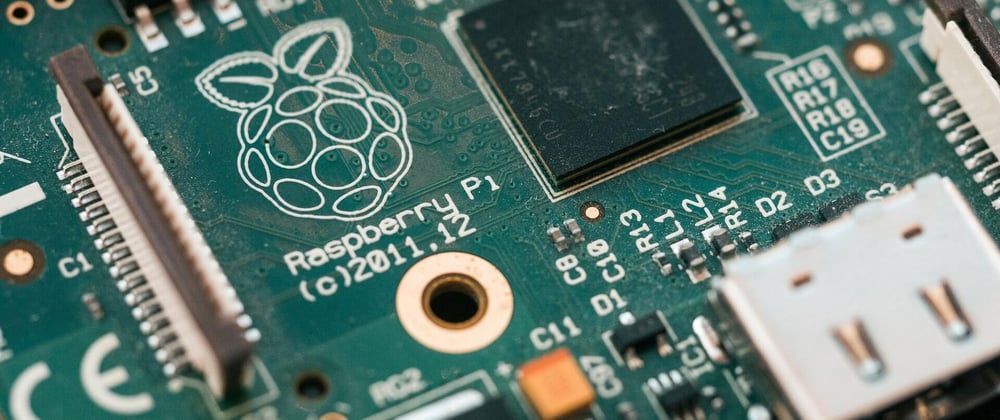This article will walk through the creation of a custom disk image for the Raspberry Pi. Possible use cases include...
- Making a Raspberry Pi disk image with all of your favorite apps pre-installed
- Making a distributable file for a product that runs on the Raspberry Pi (something like OctoPrint)
All of this is made possible by CustomPiOS, a tool that opens, modifies, and repackages pre-existing ARM images (usually a Raspbian / Raspberry Pi OS image downloaded from the official website).
This particular article will focus on making a 64-bit Ubuntu Server spin-off for the Raspberry Pi that runs docker-compose on boot. The process for making a Raspberry Pi OS spin-off is similar, but I would like to focus on the Ubuntu Server because it poses a few unique challenges that are worth covering.
Getting Started
First, let's clone the CustomPiOS github repo and cd into the src folder.
git clone https://github.com/guysoft/CustomPiOS
cd CustomPiOS/src
We'll also want to install these dependancies:
sudo apt install qemu-user-static p7zip-full
Depending on your machine, you may need some other dependencies as well. A full list can be found on the CustomPiOS github page.
Next, we need to run the make_custom_pi_os script. This will create a folder for our custom distro's config files.
./make_custom_pi_os custom_distro
If you're creating a spin-off of Raspberry Pi OS, you may also want to add the -g flag. This will automatically download the latest version of Rasbian / Raspberry Pi OS.
Next, let's change directory into the folder we just created
cd custom_distro/src
This is the directory we'll be working in from now on. It's structure should be as follows.
.
├── build_dist
├── config
├── custompios_path
├── image
│ └── README
├── modules
│ └── custom_server
│ ├── config
│ ├── end_chroot_script
│ ├── filesystem
│ │ ├── boot
│ │ │ └── README
│ │ ├── home
│ │ │ ├── pi
│ │ │ │ └── README
│ │ │ └── root
│ │ │ └── README
│ │ └── root
│ │ └── README
│ └── start_chroot_script
└── vagrant
├── run_vagrant_build.sh
├── setup.sh
└── Vagrantfile
I'll do my best to explain what these files allow us to do, but I won't be able to touch on everything in detail.
Let's start with...
The Config File
The config file contains distro-wide settings. For those creating an Ubuntu Server spin-off, it should look something like this.
export DIST_NAME=CustomDisto
export DIST_VERSION=0.0.1
export MODULES="base(network,docker,custom_distro)"
export BASE_DISTRO=ubuntu
export BASE_ARCH=arm64
export BASE_ADD_USER=yes
export BASE_USER=pi
export BASE_USER_PASSWORD=12345
export BASE_IMAGE_ENLARGEROOT=4000
export BASE_IMAGE_RESIZEROOT=200
Some of these variables are self-explanatory, but some are not. The MODULES variable defines how functionality will be added to the base image (we'll talk more about that in a moment). The BASE_IMAGE_ENLARGEROOT and BASE_IMAGE_RESIZEROOT variables determine how the size of the image is increased before and after files are copied onto it (these two variables are optional; only use them if you need to).
The Image Folder
The image folder is where the base image for our custom distro should go. In fact, if you're following along, go ahead and download the 64-bit Ubuntu Server disk image file. It can be found here. Don't extract the image, though. Simply place the compressed file in the image directory.
CustomPiOS should be able to find most images on its own, but it has trouble with the 64-bit Ubuntu image. If it's having trouble, set the base image path in the config file like so.
export BASE_ZIP_IMAGE=image/my_base_image.img.xz
The Modules Folder
The modules folder contains "modules" that add functionality to the custom distro. By default, a module of the same name as your custom distro folder was created when you ran the make_custom_pi_os script. Within this module is a filesystem folder, a start_chroot_script, an end_chroot_script, and another config file.
Let's break each of these down.
The Filesystem Folder
The filesystem folder contains all of the custom files that you would like to be present on your custom distro. It contains three sub-folders, each of which will unpacked at a different mount point: the root folder will unpacked at the root directory, or /; the home folder will be unpacked at /home; and the boot directory will be unpacked in the boot partition (which is usually mounted at /boot).
The Start Chroot Script
The start_chroot_script runs in a chroot environment on the disk image. Use this to install software, change file permissions, and/or do anything else that would require the use of terminal.
In this script, you should also have access to a few extra commands (courtesy of the auto-generated line source /common.sh): the unpack command and the gitclone command. More information can be found here.
The End Chroot Script
The end_chroot_script can be used to clean up after the start_chroot_script. A lot of modules don't use this, however. Feel free to delete it if you'd like.
The Module Config File
The config file within the module folder can used to set environment variables for your own use within the start and end chroot scripts. By default, only an example variable is generated.
CUSTOM_DISTRO_VAR="This is a module variable"
Note that the variable name starts with CUSTOM_DISTRO. For a variable to be exported, it's name must begin with the module name. Also, note the slight change in syntax from the global config file. Instead of using the export command, these config files use .env style syntax.
Although you could hard-code values into the start and end chroot scripts, I would strongly recommend using these module-level config files. The variables exported from these files are also accessible in (and can be overridden by) the main config file. This greatly improves modularity; after you're done creating your custom distro, you could even release your custom_distro module as an add-on to CustomPiOS.
Including Modules in the Final Disk Image
Now, let's revisit this line in the main config file.
export MODULES="base(network,docker,custom_distro)"
The variable MODULES defines which modules to include and how those modules should depend on each other. In the example above, three modules are included: base, network, docker, and custom_distro. The network, docker, and custom_distro modules depend on (or extend, we could say) the base module. In fact, every module must depend on the base module. However, it can get more complicated. Here's another example.
export MODULES="base(network(octopi, picamera))"
In this case, octopi and picamera depend on network, which depends on base.
I would also like to point out that we have access to quite a few built-in modules, including...
- admin-toolkit
- auto-hotspot
- auto-mount-removable
- cockpit
- docker
- gui
- usbconsole
Those are a few of my favorites. A full list with descriptions can be found here.
Building our Custom Ubuntu Server
In order to create our custom Ubuntu Server, we're just going to make a few changes to the custom_distro module.
Setting a Static IP
In order to set a static IP, we'll create etc/netplan/00-installer-config.yaml within the filesystem/root directory of our module. Within this file, we'll save the following,
# Static ip configuration
network:
ethernets:
eth0:
addresses: [10.0.0.2/24]
gateway4: [10.0.0.1]
nameservers:
addresses: [4.2.2.2, 8.8.8.8]
version: 2
where 10.0.0.2 is our static ip.
Configuring docker-compose
To configure docker-compose, simply create a folder called docker-compose within the root directory, and then place your docker-compose.yml file within that folder along with another configuration files you might need (like a .env file).
First-time Boot Script
It's often helpful to have docker-compose start on boot. A restart flag can be set in the docker-compose.yml file, but docker-compose still won't start on the first boot-up. To do that, we'll write first-time boot script.
In the filesystem/root/etc directory, create a file named rc.local. Then, within that file, save the following contents.
#!/bin/bash
echo
echo "==== Starting Docker Compose ===="
echo
pushd /docker-compose
docker-compose up -d
popd
echo
echo "==== Docker Compose has been started ===="
echo
rm ${BASH_SOURCE[0]} # Remove this line if you want the script to run on every boot-up
Finally, we'll need to make this script executable. We can do that easily within the start_chroot_script by adding the following line to the end of the script.
chmod +x /etc/rc.local
Building the Image
After finishing the configuration of our custom distro, we finally get to build our distributable image. This can be done by running the following command (make sure you're in the custom_distro/src directory).
sudo ./build_dist
After the command finishes (it can take some time), the resulting distributable image can be found in the newly created custom_distro/src/workspace directory. It'll have the same name as the base image.
If you encounter any errors, be sure to review the configuration files. You may also want to try one of the different build methods listed on the CustomPiOS github page.
Conclusion
CustomPiOS is a really powerful tool, and I'm actually surprised there aren't more tutorials for it out there. It's been really useful to me, and I think a lot of other people would appreciate knowing how to use it.
To check out some of the other projects that use CustomPiOS, take a look at this list.
Thanks so much for taking the time to read this article. I know it's kind of a long one, but I hope it's helpful. If you have any questions or if you find any errors in this article, please let me know in the comments below.
Have a good one,
- Simon
SDG
.
.
.
.
.
Photo by Harrison Broadbent on Unsplash







Oldest comments (0)